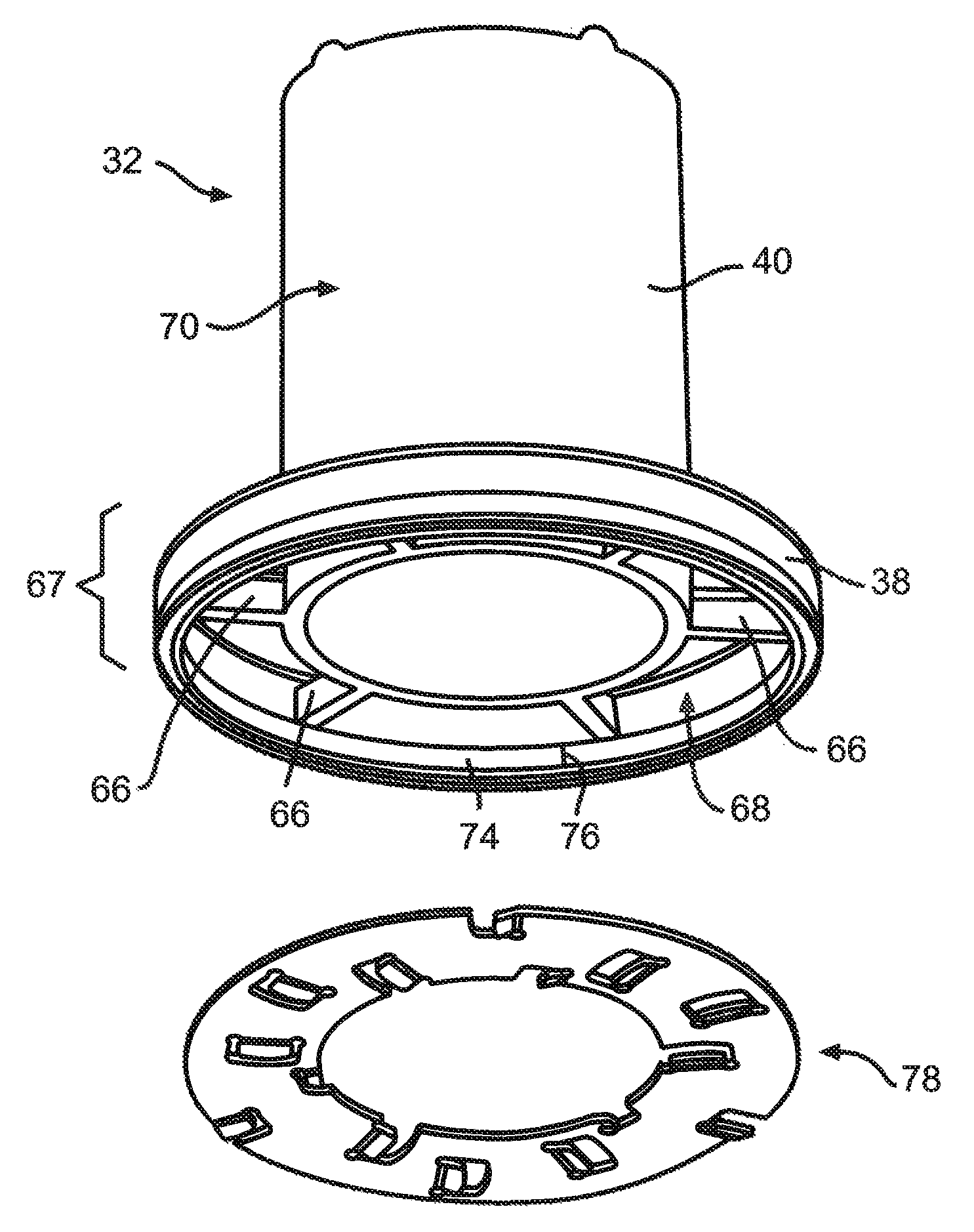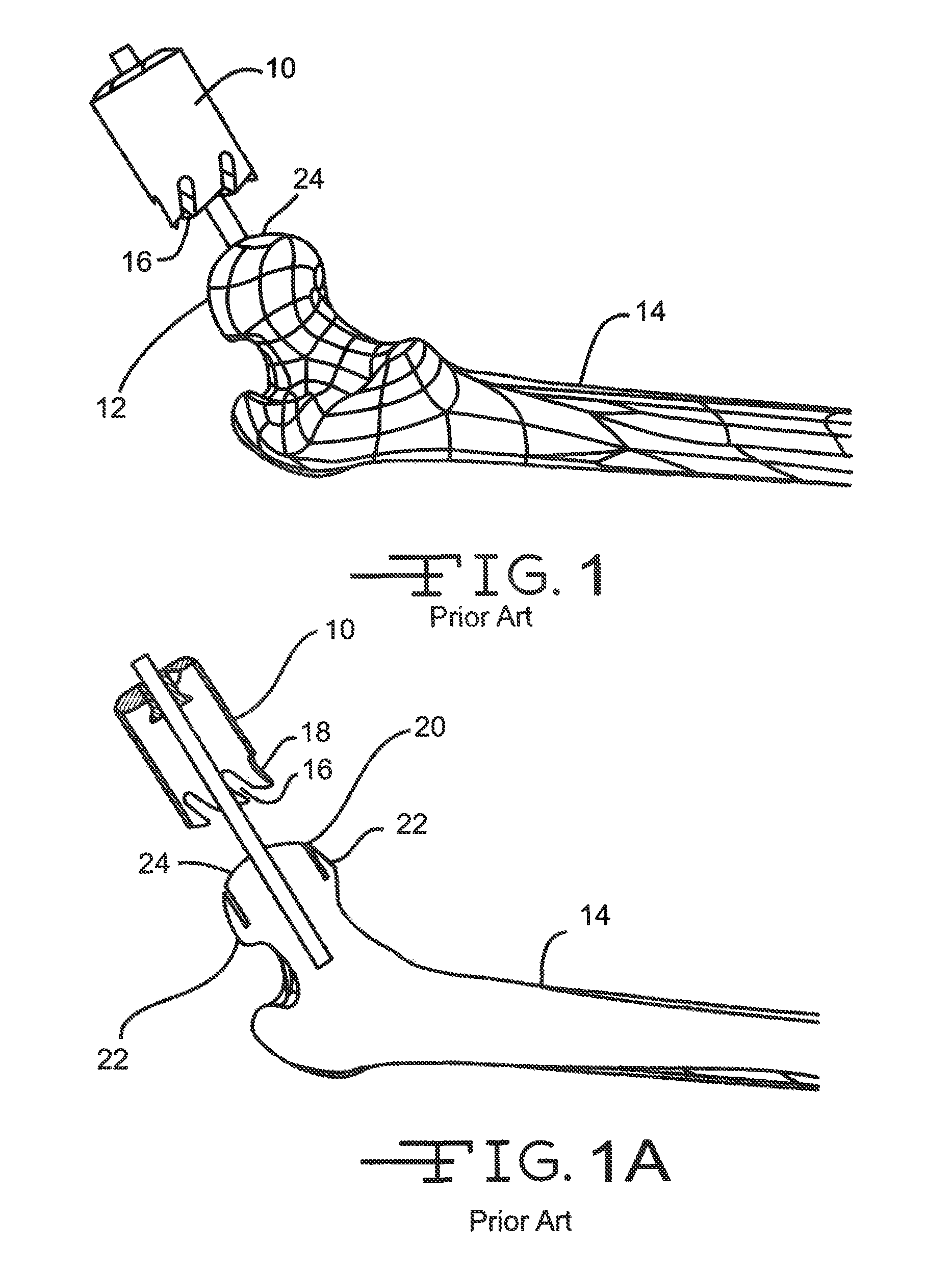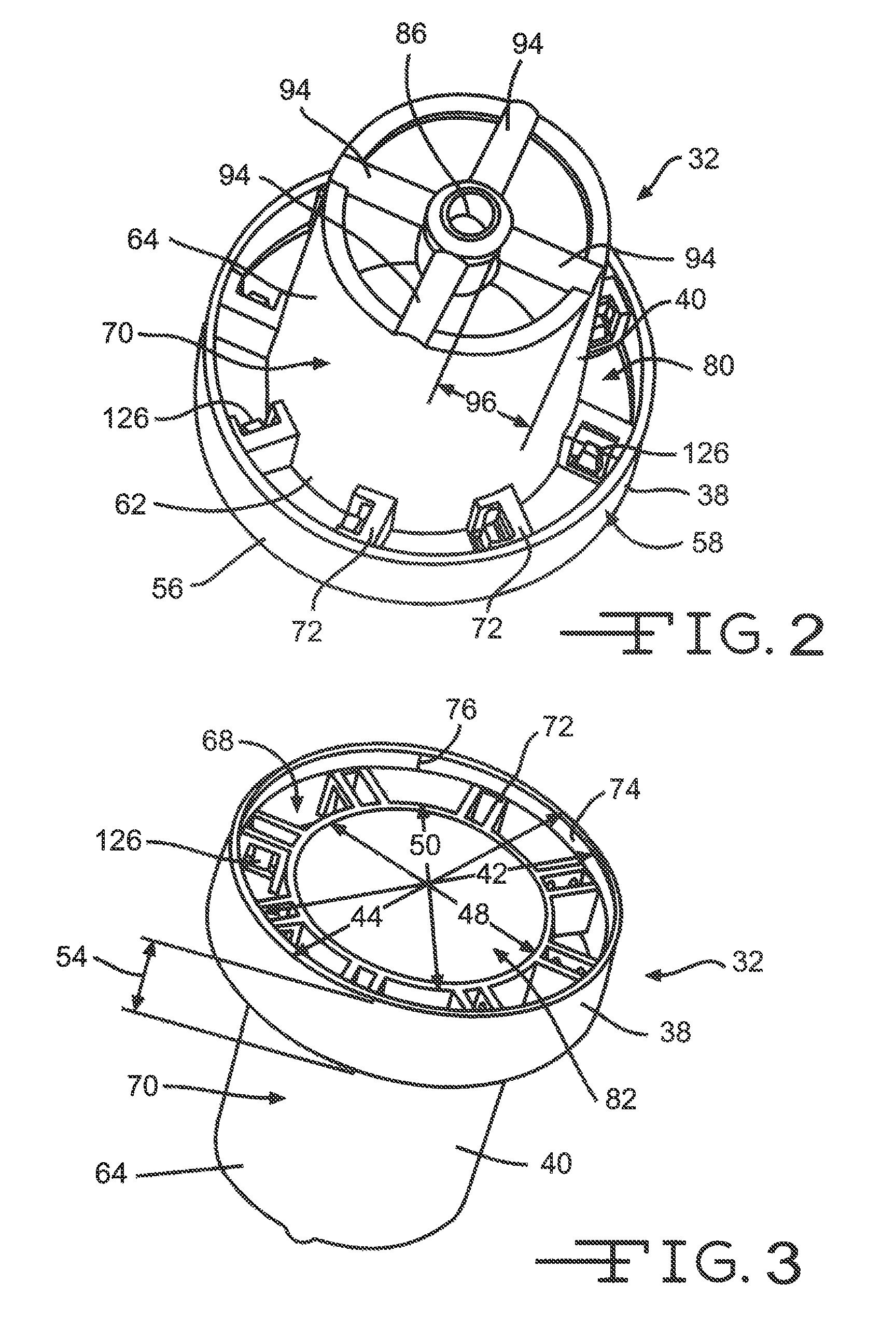Disposable cylindrical cutter
a cylindrical cutter and disassembly technology, applied in the field of disassembly cutters, can solve the problems of difficult to properly fit an implant over the end, unsatisfactory patient outcomes, and 10/b> not removing all the bone, so as to avoid the need for expensive machining and grinding operations, and reduce the cost of production. , the effect of low cos
- Summary
- Abstract
- Description
- Claims
- Application Information
AI Technical Summary
Benefits of technology
Problems solved by technology
Method used
Image
Examples
Embodiment Construction
[0037]Now turning to the figures, FIGS. 2-11A illustrate embodiments of a bone cutter 30 of the present invention. In a preferred embodiment, the bone cutter 30 comprises a cutter housing 32, cutter blades 34 or cutter disc 78, and a guide rod 36 (FIGS. 11, 11A).
[0038]As shown in FIGS. 2-4, 8, 8A, and 10-11A, the cutter housing 32 preferably comprises two cylinders, a first cylinder 38 and a second cylinder 40 that are joined therebetween. In a preferred embodiment, the first cylinder 38 comprises a first cylinder inner diameter 42, a first cylinder outer diameter 44, and a first cylinder wall thickness 46 therebetween. The second cylinder 40 comprises a second cylinder inner diameter 48, a second cylinder outer diameter 50, and a second cylinder wall thickness 52 therebetween.
[0039]In addition, the first cylinder 38 comprises a first cylinder height 54 extending from a first cylinder distal base portion 56 to a first cylinder proximal end portion 58. In a preferred embodiment, the ...
PUM
 Login to View More
Login to View More Abstract
Description
Claims
Application Information
 Login to View More
Login to View More - R&D
- Intellectual Property
- Life Sciences
- Materials
- Tech Scout
- Unparalleled Data Quality
- Higher Quality Content
- 60% Fewer Hallucinations
Browse by: Latest US Patents, China's latest patents, Technical Efficacy Thesaurus, Application Domain, Technology Topic, Popular Technical Reports.
© 2025 PatSnap. All rights reserved.Legal|Privacy policy|Modern Slavery Act Transparency Statement|Sitemap|About US| Contact US: help@patsnap.com



